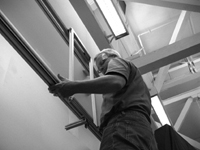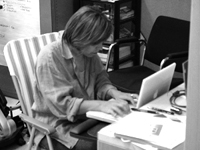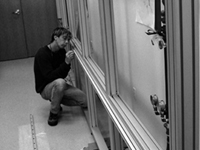
Meet the Onomists
The members of Onomy Labs have multidisciplinary educational background and experiences that combine to form an interdisciplinary approach to design. We consciously bring the four major creative disciplines of art, science, design, and engineering together in our work where each is a first-class citizen of the process.

Mark Resch is an entrepreneur and artist. He is CEO and co-founder of Onomy Labs, Inc. Resch was President and CEO of CommerceNet, a nonprofit industry consortium addressing critical issues in Internet commerce. At Xerox Corporation, Resch was General Manager of New Software and Internet Opportunities in the Document Services Group; he also managed www.xerox.com. Prior to Xerox, Resch was a founder and Vice President of Operations at Luna Imaging Inc.; Vice President and Director of Computer Imaging at CRSS Architects, Inc.; and Director of Graphic Arts at Computer Curriculum Corporation. Resch was assistant professor of Computer Art in the School of Humanities and Social Sciences at Rensselaer Polytechnic Institute, and served as co-chair for the Association for Computer Machinery's Special Interest Group on Computer Graphic and Interactive Techniques (SIGGRAPH) in 1993. Resch is originally from Chicago, Illinois, and holds a BA in History from Grinnell College and an MFA from the School of the Art Institute of Chicago.

Anne Balsamo's research investigates the relationship between culture and technology. Her first book, Technologies of the Gendered Body (Duke UP) examined the gendered implications of emergent bio-technologies. Her more recent research focuses on the development of new media genres and the reproductive qualities of new media technologies. Prior to joining the research staff at Xerox PARC, Anne was the director of a graduate program in information design and technology at Georgia Tech. She is currently working on a new book called Designing Culture that discusses aspects of the technological imagination at work. She holds a doctoral degree in mass communications and cultural studies from the University of Illinois.

Scott Minneman has long been engaged in, and with, the practice of interdisciplinary design. This manifests itself in his own background of architectural and engineering design (BA, BS, and MS from MIT; PhD from Stanford), embedded systems, interactive video, installation art, and rock climbing, as well as his research interests in applying technology to support group design work. Before joining Xerox PARC, he worked on interactive robotics for the physically challenged, and communication aids for deaf and non-vocal individuals. As a collaborator in the PARC Artist-In-Residence (PAIR) program, Scott did installations at the Yerba Buena Center for the Arts in San Francisco, The Friends of Photography, a Sony JumboTron on the facade of a nightclub on Sunset Boulevard in Los Angeles, SIGGRAPH, and a single-wide mobile home in Goleta, CA.

Dale MacDonald is trying to figure out what he doesn't do. He has developed new processes for manufacturing CMOS non-volatile memories, built and performed with his own electronic musical instruments and spent a lot of time at the beach. At Xerox PARC he made more CMOS processes, co-designed equipment for processing large-area electronics, studied the work practices of electronics designers, built systems for large public interactive displays, done corporate and non-corporate performance art, hacked a ton of code in too many languages, designed lights for dance, museums, rock and roll, and installations, been president of the Asian American Dance Performances Board of Directors, and completed an MFA in Art Practice at the University of California, Berkeley.

Mark Chow has a background in media production and engineering. He earned degrees in architecture and electrical engineering from MIT and a degree in education from Stanford, and studied filmmaking with Ricky Leacock (documentary film) and Ralph Rosenblum (feature film editing). He was an assistant director and video editor at public television station WGBH-TV in Boston; a lecturer in telecommunications at the College of San Mateo; and a video producer and researcher at Xerox PARC. While at PARC, he also ran two educational programs that immersed California school superintendents and high school students in the corporate research environment. He is the co-author of a chapter in the Morgan Kauffman book "Robots for Kids." Mark was the location sound mixer for the independent film "Black-Eyed Dog"; he mentors the Gunn High School robotics team; and he plays bass and does audio engineering for a rock and roll band.